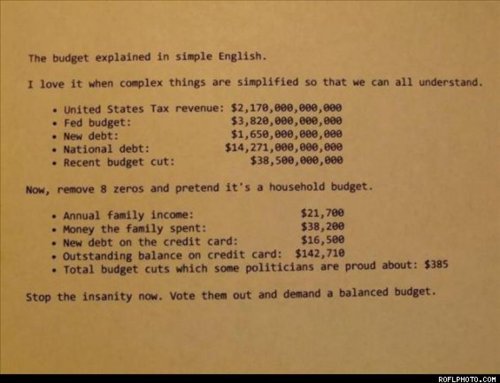I’m getting tired now, more accurately bored. Plus the lack of access to a good library is doing my head in, lol. So I'm thinking about going back to research. Here is a letter which i wrote to few professors to see if there is any interest. As it so happens, I am getting about 50% interest, lol. So over the next few weeks and months, I will be meeting some professors to see if this works out. I am restricted to London universities unfortunately, there are some good schools outside London like in Cambridge, Oxford and further afield. (heh, Kannu got a shock of his life when I told him that there is a possibility that we both might be studying in the same university, he didn't like the joke, lol, if I'm not wrong, there was a movie with this theme as well).
Dear Professor X,
My apologies for contacting you out of the blue. I got your reference from the university website. This relates to my desire to explore the opportunities to read for an MPhil (part time) in History. As I noticed from the website, you have an interest in this area of Colonial Indian / British history, hence the request for a meeting.
To introduce my interest briefly: my interest is in the area of company and economic legal history. From the little that I have read about this topic, I think that when the British arrived in India and started to take / were lumbered with the judicial responsibility of adjudicating commercial disputes in places like Bengal, Madras and Bombay, they faced an unpalatable situation of trying to reconcile an inappropriate British legal tradition from the local counties; a mix between Hindu laws and various Sharia laws. Combined with the inconsistency arising between the British tradition of case law versus the common law perspectives of say Sharia, it was quite an extraordinary legal landscape that corporates faced. Starting very slowly from around 1726 but gaining much steam and traction from 1857 onwards, the legal framework in India changed significantly as the British Raj replaced the Mughal Empire's and Hindu legal systems. This seems to have been fairly well researched and well known till independence in 1947 or a even later till the right to appeal to the UK Privy Council as the court of final appeal was repealed in 1950.
The other angle to this is the British East India Company, which was the reason for and the cause of many a development in the global company law framework. For example, the concept of Royal Charters for British firms helped the British East India Company, but the examples of the South Sea Bubble and the Tulip Mania made sure that royal charters were a very inefficient way of organising firms. On the other hand, the Sharia based partnership / profit sharing structures in Mughal India or sole proprietorships in Hindu commercial frameworks had an entirely different intellectual, social, political and historical backgrounds. When these three totally different corporate law systems collided, much legal heat and some much needed light was generated. Interestingly enough, the Economist in December 2006 identified the rise of joint stock companies in the west as one of the major reasons why western economies and societies moved ahead of the Middle Eastern economies, which were still guided by the Sharia based corporate structures.
In my early readings, I seem to have found that how this process of Indian law transformation influenced British corporate legal history and vice versa has not been researched as yet. This transformation also had an impact on the corporate legal history of all the other countries which were colonised by the United Kingdom, ranging from the West Indies to Australia.
So my preliminary research questions would be as follows:
- What were the major areas where there were significant intellectual, legal, religious and historical differences between the imported British Legal system and the domestic Mughal Sharia legal systems in India between 1726 and 1950 relating to commercial cases?
- How did the legal system handle three competing legal frameworks (British, Mughal Sharia with its multiple schools of Islamic jurisprudence and a very amorphous Hindu legal system) for commercial cases?
- Due to the changes implemented in India, did any changes in British legal history happen to ensure consistency and legal equality between India and UK?
- How did British - Indian trade get impacted with consequent angles on investor protection, consumer protection, etc.
- What did these mean for the development of company law and
corporate governance in the 19th and 20th century? Can we say that the corporate law developments in British India had a strong impact in British Corporate law developments?Data is available in Indian archives (in New Delhi, Calcutta, Bhopal, Mumbai, etc.), British archives (India Office, Kew Garden, etc.). I am proficient in English, Hindi, Bengali, Sanskrit and I would also like to resume my studies in Farsi if this research goes ahead, which should allow me to research Mughal court documents in Indian archives if required.
Why the History Department and not other schools such as the Law or Business School? Unfortunately, the Law department requires prior experience / qualification in law which I do not possess. The Business Schools are not that interested in the arcane aspects of corporate law history combined with colonial history and religious law making. Religious or Islamic schools are too limiting and do not have the breadth. The History department allows one to explore all these elements with multiple dimensions.
Why me and why a part time MPhil? I am a banker with an interest in history. I am working in a bank, which has an amazing archive going back several hundred years. Just to keep my mind in gear and for it not to fall in disuse, I would like to spend some of the evenings and weekends studying this fascinating area. I have prior qualifications in mathematics (bachelor degree), financial economics & computer science (graduate degree), but my academic exposure to history is relatively low. I would convert this missive into a formal research proposal, but thought it might be beneficial to have a preliminary chat first. I will also fund my studies personally.
If you think I have addressed this wrongly or some other professor would be more appropriate, I would appreciate it if you could let me know appropriately. If I can provide any further information, please let me know and looking forward to hearing from you.
So I had my first meeting with a good professor at LSE. Fascinating stuff, but he has given me work to do, I need to create a proposal and that will mean hitting the BL, India Office and Kew Archives. Fun times, poking around in mouldy buildings and dusty archives. So from next weekend onwards, its fun times at the library




